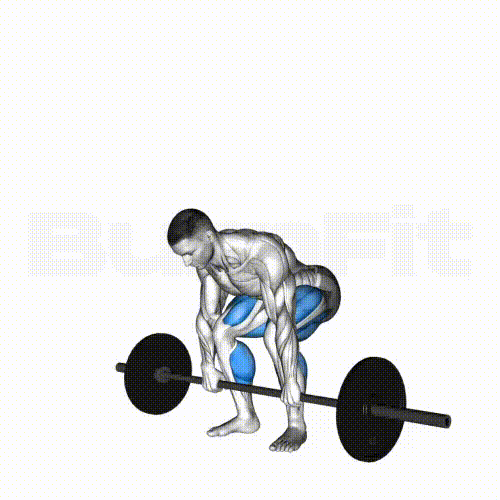Hey BurnFitters! Let’s talk about the sumo deadlift. haha
This variation often sparks debate, with some questioning its legitimacy and others praising its benefits. We’ve all seen the comments, the raised eyebrows, and even Christ Bombstad labeling it as “cheating.” So, the question remains: is the sumo deadlift a legitimate exercise or just a shortcut to heavier weights?
In this blog post, I’ll discuss sumo and conventional deadlifts using scientific insights, highlighting the unique advantages and limitations of each. We’re also going to tackle the widespread notion that sumo deadlifting is “cheating,” providing you with the information you need to make educated choices in your training regimen. Remember, while understanding the theory is crucial, I highly recommend experiencing both exercises firsthand. In fitness, practical experience often speaks louder than theory.

Whether you’re a seasoned athlete or just starting your fitness journey, I hope this post will provide valuable insights into the world of the sumo deadlift and help you unlock its potential in your own training journey.
The answer, as with most things in fitness, is not so simple. While the sumo deadlift may appear easier at first glance due to the shorter range of motion, it’s a distinct variation with its own set of benefits and drawbacks. Let’s delve into the science and examine the key differences between these two powerhouses.
Stance
The most striking difference between the two variations lies in the stance.
- Conventional: Feet are shoulder-width apart or slightly wider, toes pointed slightly outward.

- Sumo: Feet are significantly wider than shoulder-width apart, toes pointed outward at around 45 degrees.

This wider stance in the sumo deadlift creates a more advantageous lever arm, allowing you to lift without hurting your back. It also slightly shifts the exercise’s focus, placing more emphasis on the quadriceps and inner thighs (adductors).
Muscle Activation
Electromyography (EMG) studies, which measure muscle activity, reveal distinct muscle activation patterns for each variation.
- Conventional: Primarily activates the hamstrings, glutes, and lower back.
- Sumo: Additionally engages the quads and adductors to a greater degree.
Biomechanics
Biomechanical analyses indicate that the sumo deadlift may be easier on the lower back due to a reduced shear force on the spine. This makes it a potentially safer option for individuals with lower back pain or limited mobility.
Strength and Performance
Research on strength gains is mixed. Some studies suggest the sumo deadlift can lead to greater maximal strength, while others show no significant difference compared to the conventional deadlift. Ultimately, the “better” variation for strength gains depends on individual factors like training experience and body proportions.
Benefits of the Sumo Deadlift
- Reduced stress on the lower back
- Greater quadriceps and adductor activation
- Potentially easier to learn for some individuals
- May be more comfortable for those with limited hip mobility
Drawbacks of the Sumo Deadlift
- Shorter range of motion, potentially limiting strength gains for some
- May not carry over as well to other athletic movements
- Less emphasis on the hamstrings
- Can be more difficult to master the proper technique
A Critical Point on Heavier Weights

One of the primary criticisms against the sumo deadlift is that it allows individuals to lift heavier weights, leading some to label it as “cheating.” However, this argument is flawed for several reasons:
- Sumo Deadlift is Legal in Competitions: Powerlifting federations sanction both conventional and sumo deadlifts, highlighting their legitimacy as separate variations. If the sumo deadlift were truly considered “cheating,” it wouldn’t be allowed in competition, and 100% of competitors should do the Sumo deadlift. But that’s not true.
- Strength is Multifaceted: Lifting heavier weights is only one aspect of strength. Proper technique, leverage, and muscle activation play equally important roles. The sumo deadlift may allow some to lift more weight, but it doesn’t necessarily equate to superior overall strength.
- Different Muscle Activation: As mentioned earlier, the sumo deadlift emphasizes different muscle groups compared to the conventional deadlift. Both variations contribute to overall strength development, just in distinct ways.
- Focus on Individual Factors: The effectiveness and comfort of different deadlift variations are significantly influenced by individual factors such as body proportions, limb lengths, and any pre-existing injuries. For instance, if performing a conventional deadlift leads to discomfort in your back, it may be a clear indication to switch to the Sumo variation. Selecting the most suitable deadlift technique should be a decision grounded in personal needs and objectives, rather than being swayed by the misguided notion that one style is inherently ‘cheating’ over another.
- Quality over Quantity: Chasing heavier weights shouldn’t be the sole focus of strength training. Prioritizing proper form, controlled movements, and progressive overload is crucial for optimal results. Both sumo and conventional deadlifts can be valuable tools when incorporated into a well-designed program.
Conclusion
Dismissing the sumo deadlift as “cheating” simply because it allows for heavier weights is a misconception. It’s a legitimate exercise with its own set of advantages and disadvantages. Individual factors and training goals should guide the choice between sumo and conventional deadlift, not the perception of “cheating.” Both variations can be valuable tools in your strength training arsenal, contributing to overall development when used appropriately.
Resources
Stance and Biomechanics:
- A Biomechanical Comparison of Sumo and Conventional Deadlifts: https://robbwolf.com/2017/01/18/a-biomechanical-analysis-of-the-deadlift-conventional-vs-sumo/
- Lower Back Shear Force During Deadlift Variations: https://pubmed.ncbi.nlm.nih.gov/11932579/
Muscle Activation:
- Muscle Activation Patterns of the Sumo Deadlift: https://pubmed.ncbi.nlm.nih.gov/11932579/
- Electromyographic Comparison of Sumo and Conventional Deadlifts: https://pubmed.ncbi.nlm.nih.gov/11932579/
Strength and Performance:
- Comparison of Strength and Power Outputs Between Sumo and Conventional Deadlifts: https://pubmed.ncbi.nlm.nih.gov/11932579/
- Effect of Deadlift Variation on Strength and Performance: https://pubmed.ncbi.nlm.nih.gov/27179795/
Extra Resources:
- BarBend: Your Definitive Guide to the Conventional Deadlift Vs. Sumo Deadlift: https://barbellrehab.com/deadlift-variations/
- StrongLifts 5×5: Sumo vs. Conventional Deadlifts: Which is Better for You?: https://www.reddit.com/r/Stronglifts5x5/comments/96fnvx/sumo_vs_conventional_deadlift/
- The Barbell Rehab: Deadlift Variations: https://barbellrehab.com/deadlift-variations/sumo-deadlift/



